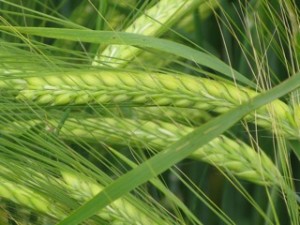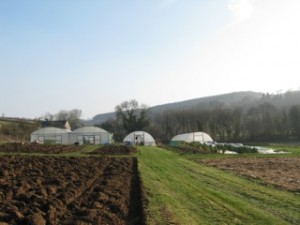
More evidence that low-calorie sweeteners are bad for your health
Studies show that artificial sweeteners can raise the risk of hypertension, metabolic syndrome, type 2 diabetes and heart disease, including stroke.

From the end of February an increase in day length and light levels have led to much more rapid growth of salad and herbs in the tunnel here at Trill Farm.
It always happens at this time of the year and is a sign that we can start harvesting our salad more heavily for the restaurants, as it grows back very quickly after being cut.
From the garden…
Outside the overwintered broad beans that survived the bird attack are putting on much more growth and the garlic is looking very strong. There is not much else outside at the moment, but sowings of further broad beans and peas will be made very shortly, and a further 100m of Jerusalem artichokes will be planted.
We received our strawberries last week, a few of which are planted in one of the polytunnels and the rest planted outside. All of our soft fruit bushes also arrived and have been planted.

Spring is in the air and everything, including weeds, is beginning to grow more rapidly down on Trill Farm. [Photo: Trill Farm]
Last year we had a big problem with creeping thistle in the garden, so we decided this year to plough the worst affected areas to try and bring the roots to the surface. Creeping thistle is a pernicious weed that is very difficult to get rid of, but can be done over a few years.
It creeps underneath the soil and can spread up to 12m a year and so if left unchecked can become a real problem. Although it produces a lot of seed, much of this is not viable and much of the thistle down that is seen on a breezy summer day contains very little seed, and of that most is not viable.
Its greatest way of spreading is by its underground creeping roots that will re-grow if hoed off at the wrong time of the year.
On areas that are not being planted until later spring we are planning to cultivate the ploughed area and sow a fast growing green manure such as mustard or phacelia to try and compete with the thistle by shading it out. This will then be cultivated back in to the soil, which will add organic matter before being planted into.
Fingers crossed for the 2012 battle against the creeping thistle!
Ploughing the soil
So, the most obvious thing that has happened so far in March has been the ploughing which has been done a month earlier than the previous two years due to the dry weather allowing us to get onto the land with a tractor without causing too much compaction.
In the propagating house all of our onions and shallots are germinating, as are the tomatoes, peppers, chillies and aubergines and the lettuce are all growing well. We will be sowing french beans for growing in the polytunnel very shortly as well as beetroot, chard, spinach, celeriac and a sowing of some of the oriental leaves before the flea beetle come along in the summer.
March always feels like the garden has finally woken up and is a critical time for sowings, plantings and cultivations. It is an exciting time for us – lots of hope as seedlings emerge and very few weeds are about!
…and into the kitchen…
It’s a quiet time in the garden at the moment, so this month we’d like to share our recipe for Lemon Barley Biscuits. Barley has played an important role as a sustaining food since ancient times, but as other grains, oats, wheat and rye became more abundant barley lost its popularity as a food.
Today most of the barley grown is used for animal feed and brewing, however this nutritious, sweet,
chewy grain is making a come back as a delicious food for human consumption!We grow this nutritious grain at Trill and are demonstrating the range of delicious dishes that can be made with the grain and flour at our Barley Tasting day on 20th March. Please join us!
Trill Lemon Barley Biscuits
Ingredients
Method
1 Heat oven to 180C/350F/Gas 4
2 Put the soft butter, sugar, egg, barley flour and lemon into a bowl and beat thoroughly.
3 Stir in the dried fruit.
4 Take a heaped teaspoon of the mixture and put it onto a prepared tray, using another teaspoon to push the mixture off the spoon and into a rough mound, flatten slightly. Repeat with the rest of the mixture, spacing the mounds apart to allow for spreading.
5 Bake for about 15 minutes until a light golden brown. Remove from the oven, leave to cool for a minute, then carefully transfer the biscuits to a wire rack and leave to cool completely.
6 Store in an airtight container and eat within four days.

Please subscribe me to your newsletter mailing list. I have read the
privacy statement